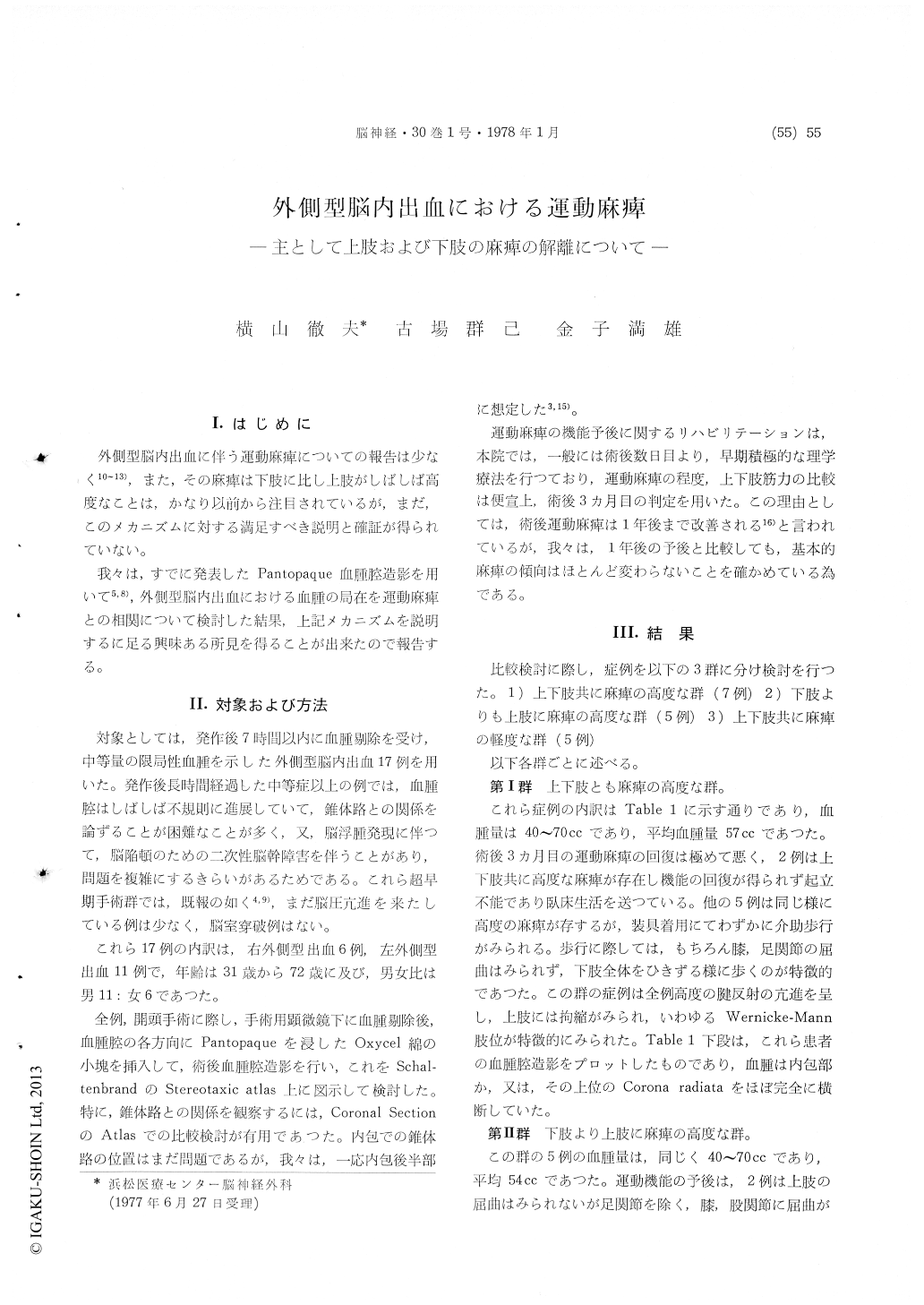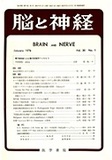Japanese
English
- 有料閲覧
- Abstract 文献概要
- 1ページ目 Look Inside
I.はじめに
外側型脳内出血に伴う運動麻痺についての報告は少なく10〜13),また,その麻痺は下肢に比し上肢がしばしば高度なことは,かなり以前から注目されているが,まだ,このメカニズムに対する満足すべき説明と確証が得られていない。
我々は,すでに発表したPantopaque血腫腔造影を用いて5,8),外側型脳内出血における血腫の局在を運動麻痺との相関について検討した結果,上記メカニズムを説明するに足る興味ある所見を得ることが出来たので報告する。
It is well known since long ago that the motor weakness in the hypertensive intracerebral hemor-rhage is often severer in the arm than in the leg, but its mechanism has not yet been clarified.
We reviewed postoperative Pantopaque radio-grams of the hematoma cavity in 17 cases of the lateral type of hypertensive intracerebral hemor-rhage and discussed on the correlation between the location of the hematoma and the pyramidal tract.
The results were as follows; 1) In patients who showed severe motor weakness both in upper and lower extremities (7 cases), the pyramidal tract was almost completely transsected in the level of the internal capsule or in its upper level of the corona radiata. In these cases, the recovery of motor weakness was very poor, but they could often walk without bending knee. 2) In patients who showed better functional recovery in lower extremity than in upper extremity (5 cases), the hematoma was mostly localized in the putamen and the external capsule and the pyramidal tract was partially destructed in the outer margin of the corona radiata in which portion the fiber to the upper extremity is supposed to descend. 3) In patients who showed good functional recovery in arm and leg, the hematoma was located in the putamen and the external capsule and they were not extended to the pyramidal tract.
As a conclusion, it is most probable that the dis-sociation of the motor weakness between arm and leg is mainly derived from the partial destruction of the pyramidal tract in the level of the corona radiata.

Copyright © 1978, Igaku-Shoin Ltd. All rights reserved.


